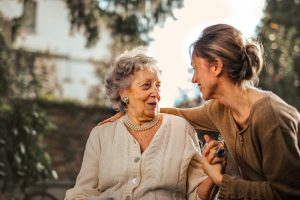How Can We Help?
Update: Am I safe to visit high-risk relatives if I just had a negative COVID-19 nasal swab?

The simple answer to this question is no.
A negative COVID-19 nasal or oral swab test tells you that there was not enough virus in your nasal or oral sample to be identified on the test. But the incubation period for development of COVID-19 after potential exposure is 14 days. So a negative test one day doesn’t mean you won’t develop infection the next. Most current tests are PCR-based (based on rapid amplification of viral RNA in order to detect virus in a sample) and pretty sensitive (i.e. able to detect virus at low levels of shedding), but these tests can take several days to result, which means the test results are not current – they reflect your infectious status several days ago, not now. And their accuracy during a surge like we’re currently seeing in California is also less – the greater the number of local cases, the greater the number of false negatives (because there are so many more tests being conducted in general). Finally, we know the “presymptomatic” period is a major source of exposure risk and that a good percentage of people never develop symptoms at all. So, basing test timing on symptom development would miss a large percentage of possible transmission risk.
The safest thing to do given our recent California surge in COVID-19 cases, with case and fatality rates higher than we have seen since this pandemic began, is to simply stay home. The best way to show your high-risk relatives your love is to keep them safe and unexposed, postponing your visit until next year when infection rates are much lower. But we do understand there are complicated factors involved in every family’s decision-making. If it is very important that you see your high-risk relatives in-person and postponing until next year feels like it is not an option, there are a few components to consider when weighing the risks.
We recommend weighing your overall risk into the equation, borrowing a rhyme Bill Miller, an epidemiologist and physician at Ohio State University, uses: time, space, people and place.
Time: Quarantining (i.e. staying home for 14 days, avoiding contact with others outside the home) prior to your visit is safest to limit the risk that you are exposed and may harbor infection without knowing it. Also consider the amount of time spent with your relative – risk of transmission increases with the amount of time you’re in an infected person’s vicinity. Even when spending time outdoors, wearing masks, and staying more than 6 feet apart, if that time is several hours, there is increased transmission risk.
Space: Maintaining at least 6-feet distance, wearing masks and spending time outdoors is safest. If you will be eating or drinking at the same time, consider spacing out considerably more (>10 feet), as masks will intermittently come off if this is the case.
People: The fewer number of people present confers the least risk, particularly during the current California surge in cases. Each additional person spending time with your high-risk loved one increases the risk there is a person harboring infection without knowing it.
Place: Outdoors is best. If not possible, choose well ventilated areas and consider geographical location in terms of local transmission rates – postpone your visit if local transmission rates are very high.
Jennifer Abrams, MD, December 29, 2020


